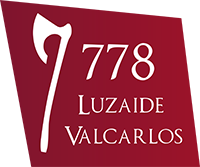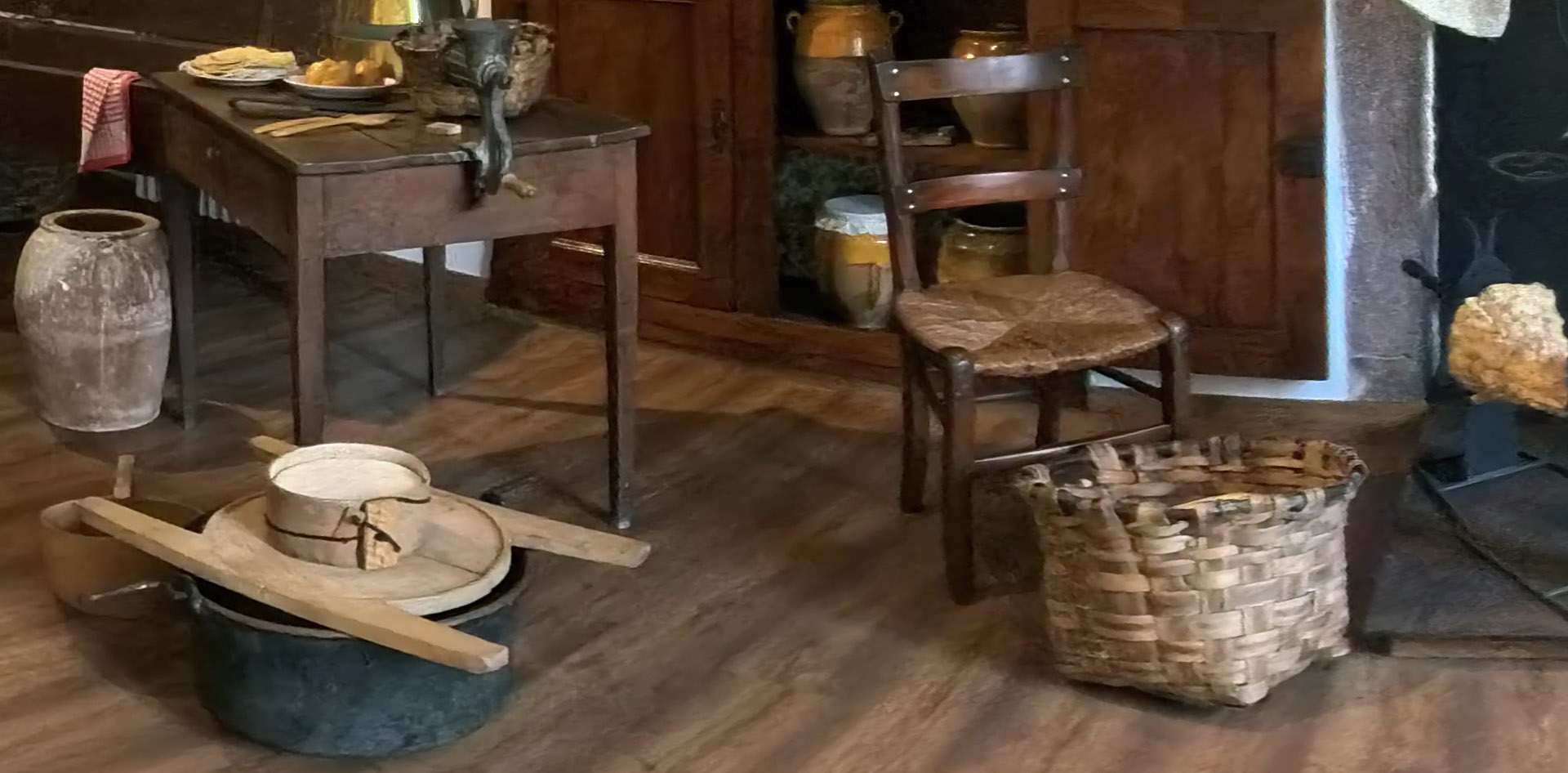In the kitchen, we can see various instruments related to cheese making. Nowadays, it is difficult to imagine that, until not so long ago, cheese was made in the kitchen at home.
In 1969, José María Satrustegui meticulously recorded its traditional production in Luzaide/Valcarlos in his work “The Domestic Group of Luzaide/Valcarlos” featured in the book ‘Cuadernos de Etnología y Etnografía de Navarra’. Here are some excerpts:
“In Luzaide, cow and sheep cheese (behi gasna eta ardi gasna) are produced.Cow cheese is generally sold fresh (gasna xuria).Sheep cheese is toasted (gorrita) immediately after production.
Soft cheese from ‘tinajas’ (clay vessels) is usually found on farmsteads. It is made with fresh cheese in June, when sheep’s milk is already strong at this time of year due to the grass, and the cheese does not turn out as well. They collect the curd and squeeze it as if to make cheese (matoina) but then crumble it again and put it in ‘tinajas’. They add salt.
Other times, this ‘tinaja’ cheese comes from the hard cheese from the previous year. It is chopped up in the sausage-making machine. In both cases, a few drops of liqueur are usually added; some prefer the taste of aniseed, others prefer rum. If it is too dry, a little warm milk is added. When made from hard cheese, salt is not needed. The cheese is made in the kitchen, next to the stove. If the herd is far away, it is made in the barn. It was common to cook the milk with hot stones. They put the stone in the same container (‘gopor’) from which they drank the milk. This is no longer practised today.
The milk is passed through a sieve and once warmed, the rennet is added, wrapped in any cloth. To make cheese, they use lamb or calf rennet (‘gatxagia’).(…) The milk must be warm, more or less at the temperature at which it comes from the udder. It usually takes half an hour to curdle. If it curdles sooner, it means there is too much rennet. After a while, the curd (‘mamia’) is crumbled and slowly collected by hand until it is placed in the moulds.
Once the cheese has been shaped, it is burned or toasted immediately after finishing. The instruments used in cheese making are:
- ‘Kotxia’, (‘kotxu’), a wooden vessel for milking.
- ‘Taula’, a base on which the cheese was worked. It was equipped with grooves to collect and pour the whey properly.
- ‘Xortxa’/’Xortxe’, a wooden mould. It was an elastic ring that was tightened with ropes.
- ‘Ximitxa’, a metal mould with a fixed base in the shape of a sieve. It sometimes has three legs to keep it off the board.
Whey (‘gaxura’) is used to make cottage cheese (‘zenberauna’).The whey is heated but not boiled. The cottage cheese slowly rises to the surface and is collected in another container. Some people add a little cold whey occasionally. Others prefer to add cow’s milk. The milk is usually consumed with all its cream. Butter is rarely made.
The milk is taken down to the village, directly to the customers. Cow’s cheese is sold at establishments in Valcarlos. Most of the sheep’s cheese production goes to the weekly market in San Juan Pie de Puerto.
Cheese is never considered a dessert. During summer tasks, for example, when the day is long and the work is more intense, a snack (‘ameketako’) is made.This could be a portion of cheese with bread and wine”.
You can download the original document in Spanish in PDF format here: “The Domestic Group of Luzaide/Valcarlos” in ‘Cuadernos de Etnología y Etnografía de Navarra’.


